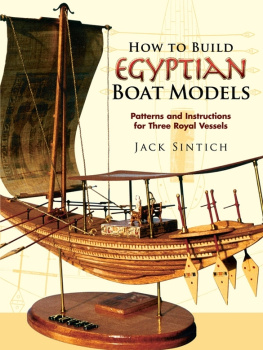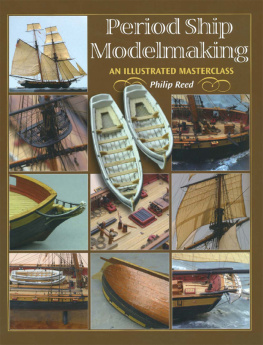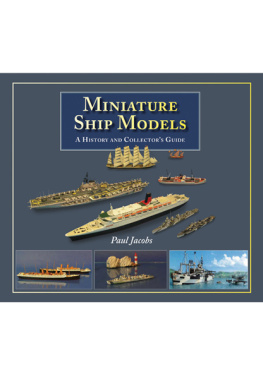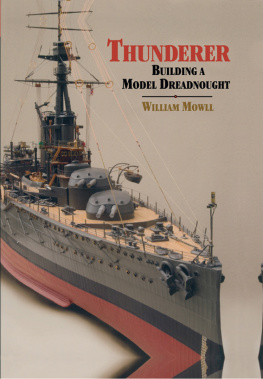Charles G. Davis - Ship Models: How to Build Them
Here you can read online Charles G. Davis - Ship Models: How to Build Them full text of the book (entire story) in english for free. Download pdf and epub, get meaning, cover and reviews about this ebook. year: 2014, publisher: Dover Publications, genre: Children. Description of the work, (preface) as well as reviews are available. Best literature library LitArk.com created for fans of good reading and offers a wide selection of genres:
Romance novel
Science fiction
Adventure
Detective
Science
History
Home and family
Prose
Art
Politics
Computer
Non-fiction
Religion
Business
Children
Humor
Choose a favorite category and find really read worthwhile books. Enjoy immersion in the world of imagination, feel the emotions of the characters or learn something new for yourself, make an fascinating discovery.
- Book:Ship Models: How to Build Them
- Author:
- Publisher:Dover Publications
- Genre:
- Year:2014
- Rating:5 / 5
- Favourites:Add to favourites
- Your mark:
- 100
- 1
- 2
- 3
- 4
- 5
Ship Models: How to Build Them: summary, description and annotation
We offer to read an annotation, description, summary or preface (depends on what the author of the book "Ship Models: How to Build Them" wrote himself). If you haven't found the necessary information about the book — write in the comments, we will try to find it.
Complete, step-by-step instructions for building schooners, galleons, clipper ships, more. Includes scale plans for 1846 clipper ship Sea Witch. Excellent guide for both the novice and the practiced woodworker from the first steps in selecting proper materials to final task of painting the model. Over 150 photographs.
Ship Models: How to Build Them — read online for free the complete book (whole text) full work
Below is the text of the book, divided by pages. System saving the place of the last page read, allows you to conveniently read the book "Ship Models: How to Build Them" online for free, without having to search again every time where you left off. Put a bookmark, and you can go to the page where you finished reading at any time.
Font size:
Interval:
Bookmark:

[1] MODEL OF THE CLIPPER SHIP SEA WITCH
Built by Charles G. Davis

Copyright
Copyright 1925, 1953 by the Marine Research Society.
All rights reserved.
Bibliographical Note
This Dover edition, first published in 1986, is an unabridged republication of the work originally published as Publication Number Eleven of the Marine Research Society, Salem, Massachusetts, in 1925. The plates on pages xvxxx, originally unbacked, are back-to-back in this edition. The present edition is published by special arrangement with the Peabody Museum, East India Square, Salem, N.Y. 01970.
Library of Congress Cataloging-in-Publication Data
Davis, Charles G. (Charles Gerald), 18701959.
Ship Models.
Reprint. Originally published: Salem, Mass. : Marine Research Society, 1925.
Includes index
ISBN-10: 0-486-25170-5
eISBN 13: 978-0-486-15619-4
1. Ship Models. 2. Sea Witch (Clipper-ship) I. Title.
JC177.B3 1792d
944.04dc21
99-048658
Manufactured in the United States by Courier Corporation
25170512
www.doverpublications.com
F OR many years there has been an increasing demand for a book on building models of sailing ships. The model yacht and the sailing boat have their manuals but necessary information relating to the various types of square-rigged vessels lies buried, here and there, in the pages of many volumes or remains unrecorded. The practical disappearance of the square-rigged ship and with it the passing of the old-time sailor who might supply the required information, also makes it exceedingly difficult for the builder of ship models to obtain first-hand information on those details so essential in constructing a model built to scale and correctly fitted and rigged. It was with great satisfaction, therefore, that the Marine Research Society at last found a man who was not only competent to write a book on model building and make the drawings necessary to illustrate the same, but willing to undertake the task.
Mr. Davis has had an unusual training. A naval architect by profession he has built many types of vessels and during the World War he superintended the construction of a score or more of large ships. The many line engravings in the following pages attest to his ability as a draftsman and also to his knowledge of every step in the actual construction of a sailing ship. And this familiarity with the old-time ship is based not only upon a technical training but also upon a practical experience gained while a seaman on board merchant vessels engaged in foreign trade.
This volume supplies complete instructions as to proper equipment and the various progressive steps to be taken in the laying out and construction of the hull and fittings. The clipper ship Sea Witch has been selected as a typical vessel to build in model form and in a pocket at the end of the volume will be found scale plans supplying exact lines for the hull and also a sail plan.
While this volume gives the dimensions for the masts and yards it does not cover the subject of rigging. That properly belongs to another volume and full information may be obtained in Biddlecombes Art of Rigging, published by this Society in 1925.
Many friends have encouraged the preparation and publication of this volume and thanks are particularly due to Mr. William E. Northey, Mr. Malcolm B. Stone, Dr. Carl M. Vogel, Mr. Irving R. Wiles, and to the officers of the Peabody Museum, Salem.
W ORKING P LANS FOR A M ODEL OF THE C LIPPER S HIP S EA W ITCH , In pocket on the inside of the back cover

A SHIP OF 1850
T O a man interested in ships, model building is a great pleasure. It calls for the exercise of a great deal of patience and considerable skill to produce a miniature ship so accurately as to look exactly like the original vessel, and a person just starting in at model making must not expect in his first attempt to produce a masterpiece.
It is far better to build something simple at first, just as a child enters the primary grade at school and works up; because there is a lot to learn in the building of a model ship that one cannot realize until he actually comes to do the work.
If the model is to be merely a recreation in its making, with little or no regard for accuracy, it is quite a simple matter to make something that looks like a ship; but the lure, the enchantment in building these tiny ships is in the ever-increasing desire to produce one more accurate, more ship-shape and Bristol fashion, as sailors say, than the one previously made. Even after you can make a model of a ship and get correctly the proportions and shapes of spars and hull there is ever a goal ahead to strive for, for then you come into the advanced grade where no detail is too small to incorporate into your model where the painting alone is almost an art.
Some say black paint is black paint and if a ship is painted that color there is nothing to it but black, and so they paint their models to look like a newly polished pair of shoes, even putting on shiny enamels. This spoils a ship model. You can imagine how a painting of a landscape would look if an artist were to follow the same rule. It is the trick of mixing colors and the application of them as well that makes one model look like a toy and the other like a real ship. The model should show that worn appearance that ships planking always has with, maybe, just a touch here and there as if rust had run down her sides; and when you paint the sides do so with a small brush and short strokes with once in a while a touch of red, or some other color, ever so little, mixed into the black to give it what artists term vibration. We all know that grass and trees are green; but if you look off into the distance, over a hilly country, you will notice that the very atmosphere you look through makes them look bluer and lighter blue the farther off they are, until at the most distant point they are almost grey.
So get out of the primary grade and paint your ship as if it were a real, living picture instead of a picture on canvas and your models will assume a far more natural appearance than if primary, flat colors alone were used.
Stain the blocks to get away from that suggestion of brand-new wood. Stain your running rigging for the same reason and tone everything about the ship so as to look as it does in real life. Blacken the chains. Nothing is so raw looking as a shiny piece of brass chain for bob-stays and other head rigging. I dont mean to try and make her a fake antique that is quite another practice. But do try to make her look as real ships look.
It is like working out a puzzle with the added charm that when you have done you have produced something that you can admire for years after and something that is an ornament as well, a most suggestive attraction in any room.
A ship model in a room suggests immediately a connection with the sea and all the mysteries that go with a seafaring life. Some ancestor, perhaps, followed the sea and the attic may reveal an old sea chest with curios from far-off lands. It may suggest a life in the days of the famous clipper ships, those proud mistresses of the seas that logged fourteen, fifteen or sixteen knots an hour through the water and hung onto their royal-studding sails when the ordinary ship had her topgallant sails furled to keep from driving bows under water; or it may be a pirate schooner, a slaver, or a ship away back in the sixteenth century, such as the old caravals with their quaint high bows and sterns and odd lateen yards with flags flying from every masthead.
Font size:
Interval:
Bookmark:
Similar books «Ship Models: How to Build Them»
Look at similar books to Ship Models: How to Build Them. We have selected literature similar in name and meaning in the hope of providing readers with more options to find new, interesting, not yet read works.
Discussion, reviews of the book Ship Models: How to Build Them and just readers' own opinions. Leave your comments, write what you think about the work, its meaning or the main characters. Specify what exactly you liked and what you didn't like, and why you think so.












